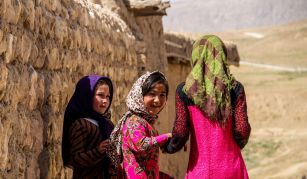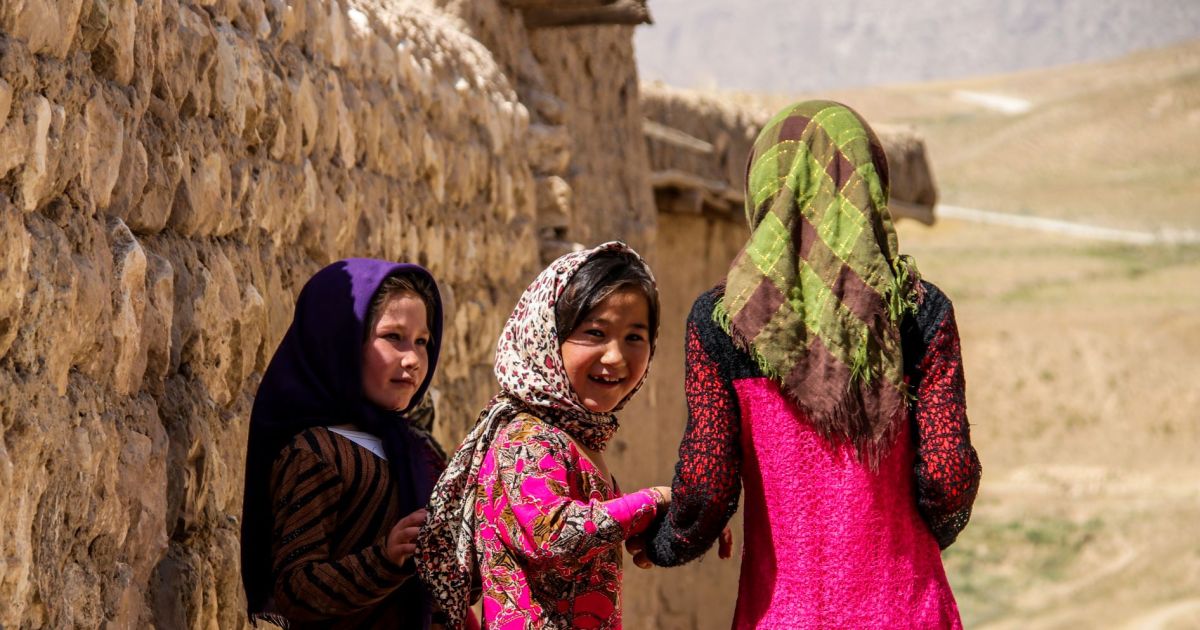
The Transforming Education Summit (TES) is an excellent starting point to reimagine how our educational systems can meet local needs within a shared global context. In our recent “State of Education in Afghanistan” conference, we discussed the challenges of national consultation in conflict, fragile, and emergency contexts and suggested how educational actors in Afghanistan and international policymakers could engage, mobilize, and facilitate a national dialogue on transforming education, along with accompanying strategies and delivery mechanisms.
We held our conference on August 15, 2022, exactly one year after the fall of the government of the Islamic Republic of Afghanistan to the Taliban. We provided an overview of the educational history of Afghanistan with a focus on the relationship between education and conflict, followed by two panels. The first panel, which included former Afghan government officials, NGO representatives working in education, and technology experts, discussed the challenges and opportunities of providing education services from a local perspective. The second panel, which included representatives from the United Nations, Global Partnership for Education, Education International, and the Brookings Institution, discussed the challenges of donor coordination for education planning and implementation within a conflict-ridden context that lacks clear engagement mechanisms.
We can use this opportunity to mobilize greater political ambition, commitment, and action to support local dialogue and initiatives that would transform the educational landscape toward inclusive, locally-led solutions.
The discussion between panelists and among the audience covered many important topics, ranging from education funding to school access and safety. However, three topics stood out for their urgency and direct relevance to the themes of the upcoming TES discussions:
- Coordination and dialogue inclusive of all national and international stakeholders are essential for educational planning in conflict-affected environments but are usually missing or inadequate.
- While community-based education (CBE) and digital solutions are often presented as the go-to interventions, we must carefully consider potential implications of scaling these interventions to avoid causing more harm than good.
- Inclusivity issues, especially concerning girls’ education, must be addressed holistically and draw upon local solutions.
Coordination and dialogue among key stakeholders
The TES concept note proposes a country-led national consultation process as the primary mechanism for engagement and mobilization, offering an inclusive and safe space for a dialogue among all stakeholders to discuss education system transformation. However, in fragile and conflict contexts like Afghanistan—where the legitimacy of the government is under question—education aims, forms, and delivery mechanisms can fuel the conflict. In such contexts, a country-led process for national consultation needs to be approached differently.
In the case of Afghanistan, the Taliban government has not taken any steps to provide a forum for stakeholders to mobilize and engage in a discussion on educational aims and delivery mechanisms, despite the fact that the Taliban’s policies toward education are at the forefront of both local and international demands from the government. The Taliban leadership is not even consulting their ministry staff on larger policy issues. There are serious limitations in dialogue among the global response to educational interventions, as well. The discussions at our conference highlighted that most international educational assistance, estimated at nearly $500 million is channeled through one entity— UNICEF. However, it is unclear, even within other United Nations programs, under what conditions UNICEF provides educational support to the Taliban government. UNICEF members meet regularly with a few ministry of education officials behind closed doors, but neither the local nor the international stakeholders know what is being discussed or decided during those meetings.
Although a government-led national consultation process may be ideal for more stable societies, in places like Afghanistan, a more inclusive and transparent approach is necessary to facilitate a national dialogue about transforming education. There is no easy or single answer on how to facilitate such a dialogue. However, we propose three considerations to help achieve that goal. First, the United Nations should form a multi-stakeholder independent coordinating body composed of current government members and national and international education actors with the mandate to facilitate an inclusive and transparent dialogue. Second, this coordinating body should support and draw upon national and international perspectives to capture the many voices and translate those into policy, planning, and budgetary recommendations needed to recover learning losses, get SDG 4 back on track, and reimagine education into the future. And third, as the TES concept note suggests, the conversation on national transformation should not be timebound. It must continue after the TES, especially in conflict and fragile states.
Scaling solutions without scaling the problems
When the heavy lifting of negotiating education policy is too daunting, national and international actors tend to fall back on familiar solutions without considering the negative consequences or spillover effects. In the case of Afghanistan, the two go-to interventions used to bypass the challenging task of negotiating an educational model with the Taliban government seem to focus on scaling CBE programs and online course offerings. However, scaling these two efforts without understanding the spillover effects and without a clear vision of the end goal might cause more harm than good. CBE has a long history in Afghanistan and shown some great success. However, the programs have been successful for a small portion of students—only about 5 percent) —when they operated as part of the overall ministry of education framework in rural areas for out-of-school children and were connected to hub schools. In the current environment, CBE is not a solution for most of the country’s urban areas. A large-scale CBE rollout will likely create a competing parallel schooling structure that could further exacerbate conflict. Additionally, without an official sanctioning of the program by the current Ministry of Education, there is no mechanism to provide credentialing for students.
Unlike CBE, education technology (ed tech) does not have a long history in Afghanistan, but reliance on digital technologies is rapidly growing and many people are looking to ed tech as a solution to solve the problems of education. However, even in stable higher-income countries, ed tech needs a robust ecosystem. In Afghanistan and other similar contexts, the challenges of logistics, technology infrastructure, content development, teacher and institutional readiness, and regulatory frameworks are daunting. Even if the infrastructure and other program issues are worked out, questions related to access, equity, and control over curriculum content will continue to be areas of concern.
Both CBE and ed tech must be incorporated as essential supplemental parts of the larger educational ecosystem but are not standalone solutions that can be scaled to solve the national concerns related to Afghanistan’s educational challenges.
Finding local solutions to promote inclusive, safe, and healthy schools
As the TES concept note outlines, inclusive, equitable, safe, and healthy schools are essential for a holistic educational experience. In fragile and conflict-affected environments, all segments of society must have access to quality education to promote a unified national identity and foster social cohesion. Issues of inclusion must be based on local solutions and dialogue. Imposing and scaling solutions from the outside—by outsiders who may not understand the complexity of the context—will likely cause more harm than good.
However, as the case of girls’ secondary access in Afghanistan illustrates, the issue of inclusion is complex and is used as political leverage locally and internationally because of its symbolic power. The discussions at our conference highlighted that the closure of girls’ schools has opened an unprecedented focus on education in the public sphere, particularly girls’ education. The Afghan population, including the diaspora, is engaged in a public debate about girls’ education–with the majority expressing their support for girls’ education but arguing about the mechanism, including 27 out of 30 Taliban ministers. This level of public support for girls’ education in Afghanistan is historic. Educational stakeholders, including representatives of international agencies, must leverage this window of opportunity to acknowledge and formalize this national dialogue. We can use this opportunity to mobilize greater political ambition, commitment, and action to support local dialogue and initiatives that would transform the educational landscape toward inclusive, locally led solutions.


